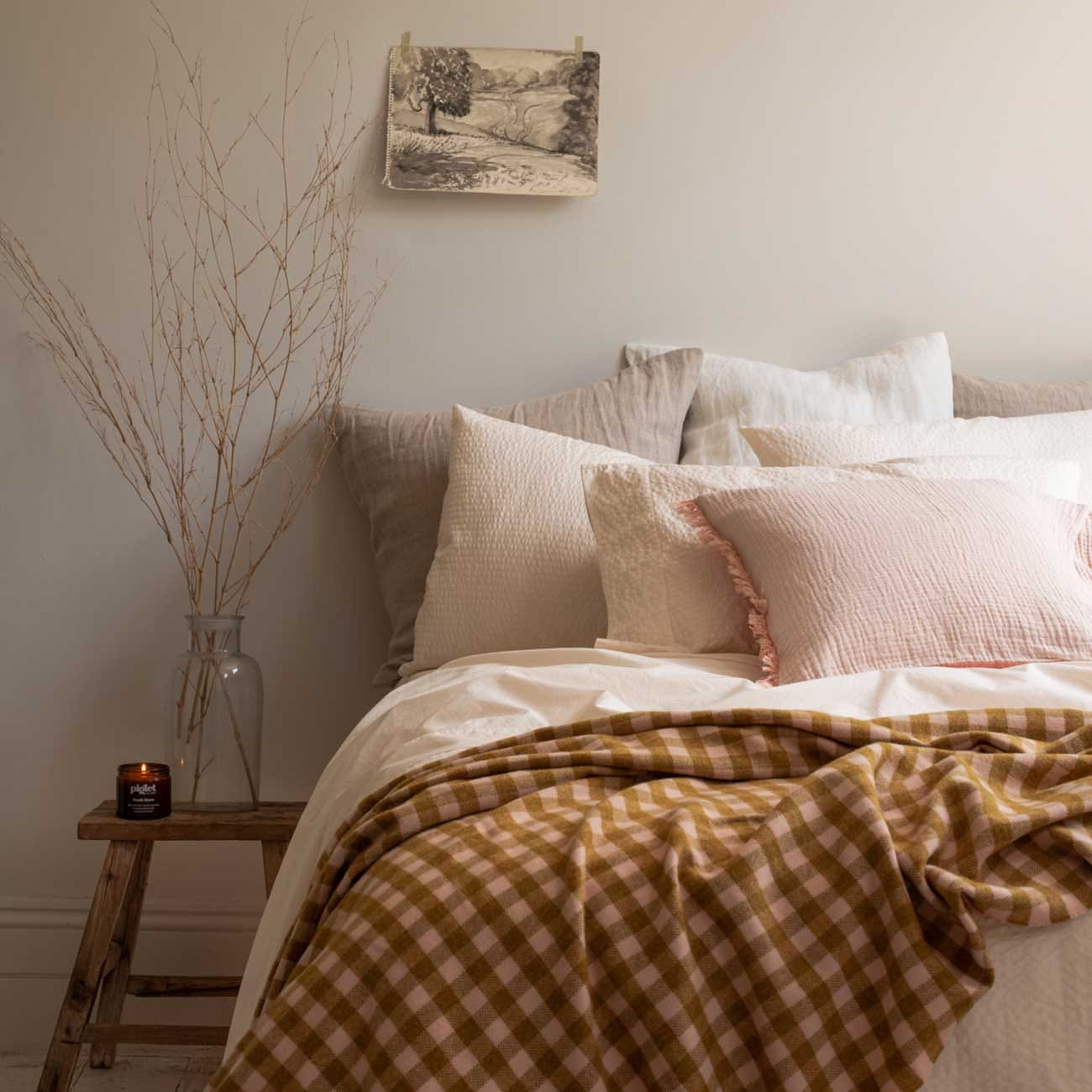There’s been a lot of talk about the health of our homes—rightfully so, especially after the tragedies and disasters happening in places like LA and WNC before that. We’ve seen how the materials that make up our homes burned, and the toxins they emitted into the air and waterways. And for those whose homes were spared from the fire, they now face the challenge of navigating life in toxic neighborhoods. These events are a wake-up call, reminding us just how crucial it is to pay attention to the spaces we live in, the materials we use, and how they impact our health and well-being.
So, I want to focus more on the physical health of our homes and I will start with out bedrooms.
I heard from the company, East Perry about someone who lost most of their home in one of the recent LA fires but managed to salvage their sheepskin mattress topper. While everything else around it was toxic or destroyed, the topper itself remained completely undamaged—which is almost unbelievable when you think about it. Though I’m not sure if they’ll continue using it, it’s remarkable how resilient natural materials like sheepskin can be in such extreme circumstances.
We all want our homes to be places of refuge and rest, but the very things that should support our health while we sleep the most—like our mattresses—might actually be doing the opposite.
I’ve been thinking a lot about the space where we spend a third of our lives—our beds. You’d think that something as fundamental as a mattress would be straightforward, but as it turns out, most conventional mattresses are made from some pretty unhealthy materials.
Let’s start with the basics:
Conventional mattresses often contain chemicals like flame retardants, which are meant to meet fire safety standards but can be toxic to your health. These chemicals have been linked to a variety of health problems, including hormone disruption and respiratory issues. And guess what? These chemicals don’t just stay on the surface—they leach into the air we breathe every night.
But that’s not all. Many conventional mattresses also include synthetic materials, like polyurethane foam, which can off-gas chemicals that are harmful over time. Add in the metal springs, and you’ve got a combination of materials that not only can cause chemical exposure but also conduct electricity. The idea of lying on metal coils that conduct electricity (from everything from Wi-Fi to cell phones) doesn’t exactly sound restful, does it?
Now, let’s talk about healthier alternatives.
The good news is, it’s easy to find healthy mattresses. You can find options made from organic cotton, natural latex, and wool. Wool, in particular, is naturally flame-resistant, so no chemicals are needed to make these mattresses safe. Plus, natural latex (made from rubber trees) offers amazing comfort without the harmful side effects of synthetic materials.
Another great thing about these mattresses? No metal springs. Many healthier mattresses use organic cotton or latex for support, creating a solid base that doesn’t conduct electricity. This means you can rest easy without worrying about all the unseen energy flowing through your body.
If you’re ready to make the switch to a healthier sleep environment, there are plenty of eco-friendly brands out there that specialize in mattresses made from sustainable, non-toxic materials. While they can be a little pricier upfront, the benefits—both for your health and the planet—are totally worth it.
I’m a huge advocate for creating spaces that nurture us, and our bedrooms should absolutely be one of those spaces. Your body will thank you!
It’s a simple search online to find healthier bedding companies, but if you want my recommendations, keep reading. There are certain big companies I would steer away from.
ps. I am not currently affiliated with any of them.





